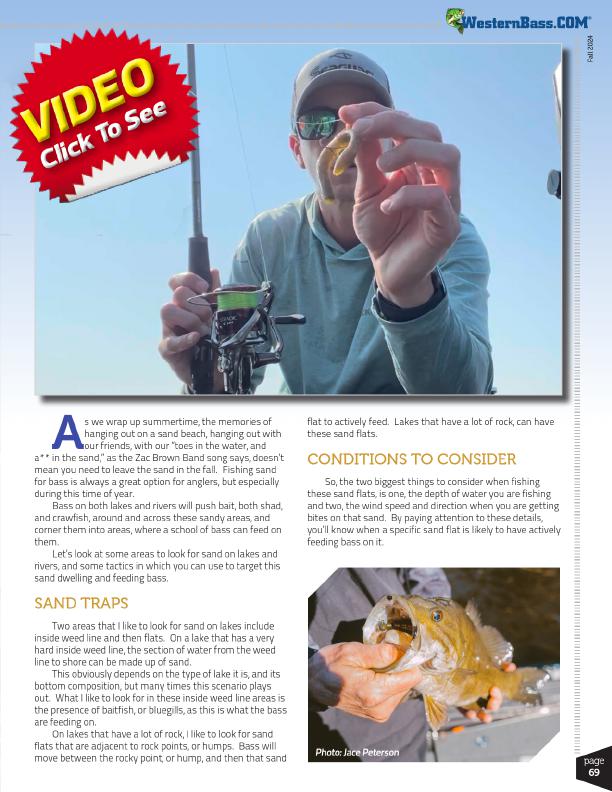
®
Fall 2024
A
s we wrap up summertime, the memories of
hanging out on a sand beach, hanging out with
our friends, with our “toes in the water, and a** in the sand,” as the Zac Brown Band song says, doesn’t
mean you need to leave the sand in the fall. Fishing sand
for bass is always a great option for anglers, but especially
during this time of year.
Bass on both lakes and rivers will push bait, both shad,
and crawfish, around and across these sandy areas, and
corner them into areas, where a school of bass can feed on
them.
Let’s look at some areas to look for sand on lakes and
rivers, and some tactics in which you can use to target this
sand dwelling and feeding bass.
SAND TRAPS
Two areas that I like to look for sand on lakes include inside weed line and then flats. On a lake that has a very hard inside weed line, the section of water from the weed line to shore can be made up of sand.
This obviously depends on the type of lake it is, and its bottom composition, but many times this scenario plays out. What I like to look for in these inside weed line areas is the presence of baitfish, or bluegills, as this is what the bass are feeding on.
On lakes that have a lot of rock, I like to look for sand flats that are adjacent to rock points, or humps. Bass will move between the rocky point, or hump, and then that sand
flat to actively feed. Lakes that have a lot of rock, can have these sand flats.
CONDITIONS TO CONSIDER
So, the two biggest things to consider when fishing these sand flats, is one, the depth of water you are fishing and two, the wind speed and direction when you are getting bites on that sand. By paying attention to these details, you’ll know when a specific sand flat is likely to have actively feeding bass on it.
Photo: Jace Peterson
page 69